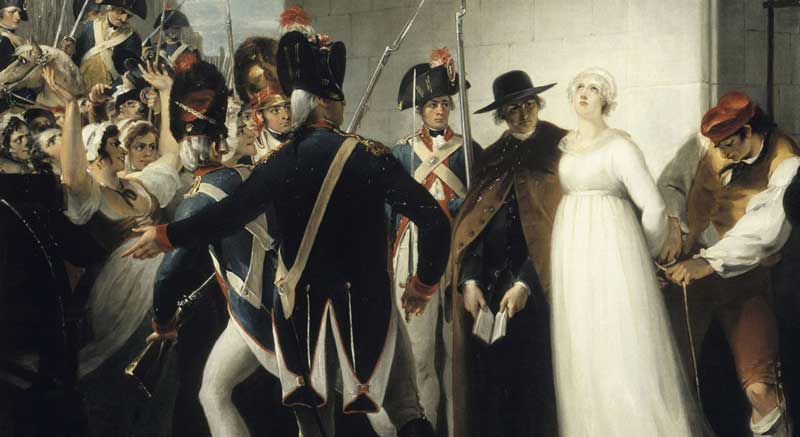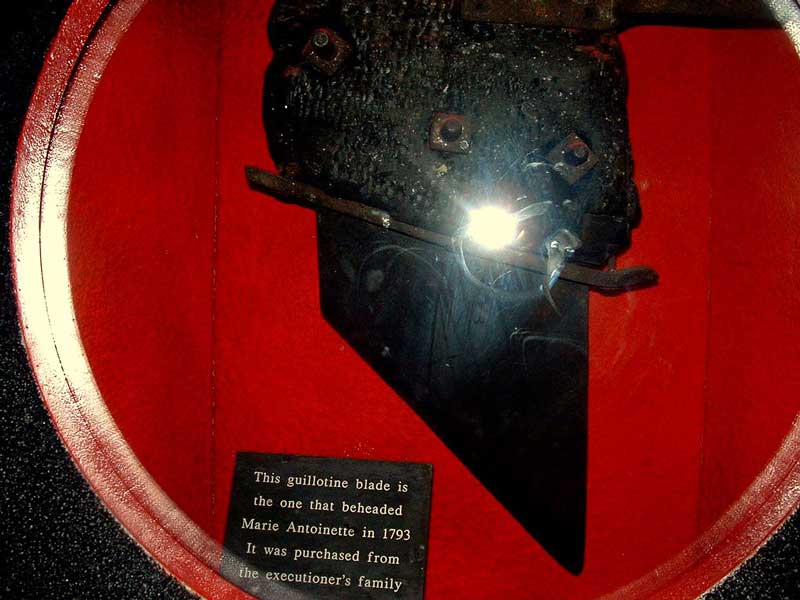
During the French Revolution in 1789, Place de la Concorde, the central public square in Paris, had witnessed the execution of Queen Marie Antoinette, wife of King Louis XVI of France, when she was beheaded by the guillotine on 16 October 1793, in front of a huge cheering crowd. She had been often painted as a selfish, overly committed to luxurious excess, and an immoral woman, who was despised by the common people of the country. She indeed believed that as the Bourbon monarchy had been ordained by God, their subjects had no right to be equal to the royals like her. However, although Marie Antoinette was no saint, not all of the criticisms of the queen were justified, even untrue. In more than one sense she was misunderstood, rather she was a victim of circumstances.
In an attempt to end the longtime enmity between Austria and France, Marie Antoinette, the youngest daughter of Empress Maria Theresa of Austria, was used as a pawn on the diplomatic chessboard of Europe, when just at the age of fourteen she was married to Louis XVI, the grandson of King Louis XV of France, on 16 May 1770. In more than one sense, the delicately beautiful young woman, with grey-blue eyes and ash-blonde hair, was a victim of circumstances. When a connection with Vienna was very much unpopular in France, the stigma of being a representative of Austria remained with her forever till her death.

It is widely believed that when she was told that the French people had no bread to eat, she advised them to eat cake, which is a total misconception. The truth is, there is no evidence that Marie Antoinette ever said that. In fact, it is the statement of a fatuous noblewoman that appeared in a story, included in the philosopher Jean-Jacques Rousseau’s Confession, written around 1766, when Marie Antoinette was a child of just 11. Actually, as a kind of displaced frustration with the crown, the French people had been attributing that phrase to all the foreign queens of French kings.
Nevertheless, there were reasons behind the indignation and resentment of the people towards the crown, due to the unwanted influence of the queen as well as the pampered mistresses of the king in the court, before the reign of Louis XVI. As Louis XVI had no mistress, Marie Antoinette became the subject to an extra level of hate, mockery, and derogation. She really had to bear the burn of public indignation coupled with tremendous hatred and aversion that had traditionally been channeled towards the mistresses.

The inability of Louis XVI to consummate their marriage for a prolonged period and the resultant childlessness of the queen in the 1770s inspired the political rivals to circulate reports relating to her alleged extramarital affairs. The rivals included the king’s own brother, who stood to inherit the throne, if she could not produce a legitimate heir. However, Marie Antoinette had to wait for all those seven years to be deflowered by her husband. Several historians suggested that probably the king had Phimosis, in which it becomes difficult for a man’s foreskin to retract, and can cause a painful erection, pain during sex as the tight inelastic foreskin chokes the erect penis. By that time, despite being promiscuous to have illegitimate affairs, which was not unusual in those days in the royal families, the queen waited patiently for her husband for the fulfillment of her womanhood. Although it was alleged that Marie Antoinette had slept with several men and women in the court, in reality, she had only one intimate friendship with a man and that too without any proof of any physical involvement. In fact, the widely circulated pamphlets depicting pornographic rumors about her character became fashionable in those days to blame her for France’s entire problem. Painting her in some pamphlets as an immoral woman who slept with her brother-in-law was unethical on the part of the revolutionaries to prove that the monarchy was corrupt.

Marie Antoinette was infamous for being frivolous and overly committed to luxurious excess, and it was alleged that her excesses played an outsize role in France’s economic problems, but the treasury of France was empty by the time her husband took the throne.
She did not create the culture of waste and excess, and did not take it to the extremes that others did, she just stepped into it. At least four members of the royal family spent more on clothing than she did, which included her brother-in-law, who ordered 365 pairs of shoes each year.

Although it is certainly true that she had many more shoes than any average person in France, she was not really a shoe freak, rather she was more concerned about dressing casually as her fashion signature. With the help of her seamstress, Marie Antoinette designed a simple white dress that shocked everybody. It was so casual that in the dress she did not look like a queen at all. Ironically, that type of white dress basically became the uniform of the women band of French Revolutionaries, and those women who were shouting and screaming madly to see the bleeding and guillotined head of Marie Antoinette, really liked the white dress as it was simple and cheap.
